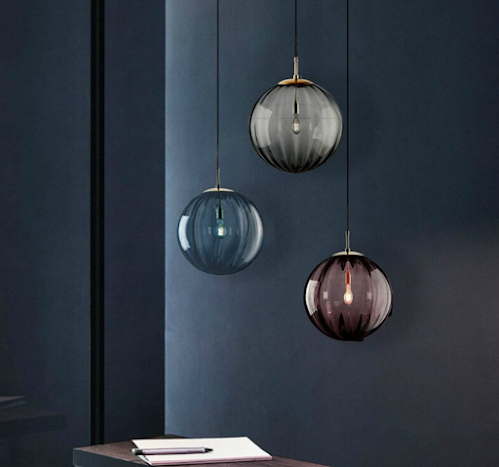A bedroom should be a personal retreat, a place where you can express yourself via your favourite colours, moods, and collections. Considering bedrooms are the most private rooms in the house, with just a few chosen guests, it is easy to overlook their overall appearance. Nonetheless, your rooms require your undivided attention. This is where you spend your time reading and resting, recharging your batteries and reflecting on your day. Let us look at some bedroom decor ideas for your safe haven.
Colour scheme
When selecting how you want your personal sanctuary to make you feel, choosing a bedroom colour scheme is critical. This may be showing a passion for colour, following a new trend, or elevating calming whites and neutrals with a fresh tint. Instead of using bright primary colours, opt for calming hues and a monochrome colour scheme. Colour theory: soft blue, lavender, or green colours are considered peaceful and pleasant.
Headboard
Consider adding a one-of-a-kind headboard to your bedroom for a minimal approach to create a statement. A headboard is a great place to go large. Choose a design that contrasts with the rest of the components in your space. A fabric-covered headboard can assist you in making selections regarding the colour, theme, and other furniture in the room. A lovely shape, a magnificent material, and one-of-a-kind embellishments are a winning combination for a headboard.
Storage
Store items out of sight to contribute to the tranquillity of a bedroom. The space will look more spacious and tranquil. If you have a tiny bedroom or a lack of closet space, put in a clothing rack to add purpose and flair. As a temporary linen closet, place a trunk or blanket chest at the foot of the bed. Choose a bedside table with drawers or doors to keep books, moisturiser, and reading glasses within access but out of view. Use a headboard with built-in drawers or sliding panels for easy access to books and essentials. A custom made organising system may make the most of available closet space.
Furniture
Furniture should fit the environment in which it is placed, and this is especially true for bedroom furniture. A hefty, big bed and dresser are not appropriate for a tiny bedroom. Furniture placement in a tiny bedroom may necessitate some ingenuity. The low slung platform bed has become a popular piece of modern bedroom furniture, and it is available in a variety of styles and finishes. Add a floor-to-ceiling mirror to make a tiny bedroom feel larger. The projection of the room in the mirror tricks the eye into thinking it is looking at a larger place. Distinctive ceiling fans are essential in hot climates. Consider your ceiling fan's attractiveness as an important element of the décor. For a nice and clear appearance, choose wall-mounted bedside shelves over floor-standing units. Mirrored closet doors, rather than simply shutting off the occupied space, will make your bedroom feel larger. For a polished high-end bedroom, place a bedroom bench at the foot of the bed. Utilize every available space.
Lighting
To produce a functional and appealing bedroom lighting arrangement, balance a wide variety of demands, with each aspect impacting several areas. Understanding how to layer your lighting is essential for generating the ideal lighting for your bedroom. This entails striking the proper mix of ambient, task, and accent lighting. Ambient lighting is best done using ceiling fixtures such as flush mount ceiling lights, chandeliers, pendant lights, and so on, or with portable lighting such as floor lamps. Task lighting does not have to be limited to the typical desk task light. Consider bedside table lamps on both sides of the bed, as well as wall-mounted work lights on each side of a headboard. Accent lighting is generally used to attract attention to and emphasise items inside a specific environment, such as artwork. Dimmers play a vital part in the overall design of your bedroom lighting when stacking it. When layering your bedroom lighting, it's also vital to consider the sort of bulb you'll use for each fixture, which will vary depending on the bulb's illumination intensity and hue. Certain tasks benefit greatly from the use of light colours.
Add texture
To create a textural and earthy appearance and feel, accessorise with sculptural plants, handcrafted artisan pottery, woven baskets, rattan shelves, raw uncut gems, and wooden spheres. Layering cushions and throws add comfort and interest. Decorative pillows come in a variety of patterns and patterns to bring delicate textures to your decor. Exquisite throws look great draped over a chair or draped at the foot of the bed. Smooth and uneven surfaces contrast to give a room a different character. Tapestry and rugs can be used as headboards. The most typical location for a rug in a bedroom is beneath the bed, where it binds the room's largest piece of furniture.
Bedding
Natural linen is casual and soft, making it an excellent choice for neutral bedroom bedding. Choose bed linens that complement the design of your furniture for a coherent bedroom decoration concept. Make your bedding design more lively by using a pattern as the main point. Impressionist designs in a bright palette may create a lively atmosphere. Botanical-print duvets appear fresh and clean. Be creative in combining colour palettes. Cover a thinner, stitched quilt with a thicker, down insert-filled duvet that has been partially folded back to show the layers. Layer pillows well to get a rich, lush appearance. Choose a single colour for your bedding design. For a lighter tone and a fluffier vibe, keep it simple and soothing with a rich saturated hue.
It may appear like decorating a bedroom to precisely express your individuality is a large order, but it is not impossible. Since your bedroom is where you go to relax and unwind, it should be built to facilitate that.










Share your thoughts :